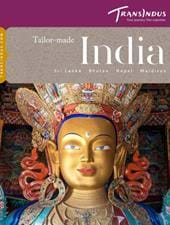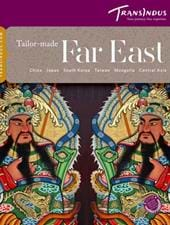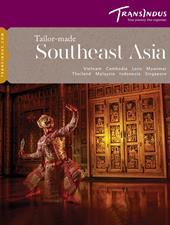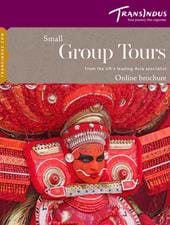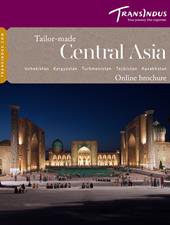Time zone: UTC +5 hours 45 mins
Capital: Kathmandu
Flying Time: 12 hours via India or Middle East
Currency
The local currency in Nepal is Rupee. Kathmandu airport has a 24 hour bank exchange counter. The Nepalese rupee (Rs) is divided into 100 paisa (p). There are coins for denominations of one, two, five and 10 rupees, and bank notes in denominations of one, two, five, 10, 20, 25, 50, 100, 500 and 1000 rupees. Away from major centres, changing a Rs 1000 note can be very difficult, so it is always a good idea to keep a stash of small-denomination notes.
Cash withdrawals on credit cards from dispensing machines are available in Kathmandu and Pokhara but should not be relied entirely on for funds.Travellers cheques can be carried in Pounds Sterling or US Dollars and are accepted at banks and major hotels. Exchanging travellers cheques outside Kathmandu and Pokhara can be difficult. Similarly credit cards, preferably Mastercard or Visa, are accepted in major hotels, tourist shops and bigger restaurants in Kathmandu and Pokhara only.
It is recommended to keep the Foreign Exchange Encashment Receipts when changing currency at banks, hotels or licensed money changers as these will be required to convert rupees back on your departure from Nepal. Some hotels accept payment from tourists only in foreign exchange and rupees can be used on showing the encashment receipts.
For those coming from India, Indian Rupees are accepted locally in Nepal as hard currency, however bringing in denominations of INR 500 or above is illegal. It is also preferable if the notes are in good condition as many businesses may refuse to accept worn out notes.If trekking, it is important to bear in mind that cash is necessary, preferably in smaller denominations.
What to Wear in Nepal
In general, during the day it is best to wear light, comfortable cottons with a pair of good ventilated walking shoes. Early morning and evening temperatures in the months of December and January can be chilly and it is advisable to carry jackets or jumpers for warmth. The northern mountain region, around an altitude above 3,300m, has an alpine climate with considerably lower temperature in the winter months of December to February. Adequate warm winter clothing is recommended.
For sightseeing you may find a good pair of sunglasses and a sun-hat handy. At monuments and temples, it is advisable to avoid sleeveless tops and short skirts. You may also be asked to remove your shoes.
For itineraries which include a nature reserve, clothing in neutral colours such as beige, brown, khaki and green is suggested for wildlife and bird-watching sessions. Full-length trousers are better suited than shorts for jungle activities. A pair of binoculars is also recommended. Leeches tend to proliferate during the monsoons and it is advisable to carry leech socks and rain-gear if trekking during these months.
Most hotels, including the more exclusive ones, do not insist on formal wear in restaurants and smart casuals are acceptable.
Food and Healthcare
Avoid drinking tap water and taking ice in drinks. Stick to boiled or bottled water and ensure that the seal is opened by you or in your presence. Aerated waters (bottled soft drinks) are fine. If you are trekking, you may wish to carry Iodine drops or tablets to sterilize water for drinking and cleaning teeth. If taking a long trek, consider buying a water filter that takes out parasites, bacteria and viruses, and make water safe to drink. These are often expensive, but they can be more cost-effective than buying bottled water.
Nepal’s cuisine has been heavily influenced by its climate as well as neighbouring India. Dal Bhat – lentil soup served over boiled rice, often with spicy curried vegetables, forms the staple dish of Nepal. Chicken is accepted by most Nepalese, while Pork and Beef tend to be avoided by many, particularly the devout Hindu populace. Barley and Millet, with potatoes tend to be favoured at higher Himalayan altitudes. Nepalese tend to look at food as fuel, so while their food is tasty, you may find a lack of gourmet dishes.
Local grain alcohol, called Raksi is popular in Nepal. Different grains produce different flavours, rice rakshi being smoother than millet raksi which tends to be stronger and more fiery. Home-made millet beer, or Chang, is favoured at higher elevations.
Imported liquor and wine can be found only at the more exclusive hotels in Kathmandu and Pokhara, and tend to be expensive. One litre of alcohol per person can be brought into Nepal duty free. Danish beers like Tuborg and Carlsberg are very popular and brewed in Nepal, as is San Miguel from the Philippines. Everest is a popular branded local beer.
Eat moderately for the first few days. Allow your system to get used to the changes. Be cautious with local milk products like cheese, cream and ice-cream as these are often made from unpasteurised milk. It is also advisable to eat only cooked vegetables and avoid green salads.
Acut Mountain Sickness (AMS) has to be borne in mind when trekking, in particular to high altitude areas such as Everest base camp. AMS affects all age groups and can strike anyone including the physically fit. According to the World Health Organization, it can occur with rapid ascent to altitudes over 2100 m (6,800 feet), although more commonly seen in rapid ascents to 2750m (9,000 feet) or more. Proper acclimatization and gradual altitude gain is essential to reduce the risk. Early signs of acute mountain sickness include headache, nausea, loss of appetite and insomnia. It is recommended to rest for a day and descend if the signs persist. Please contact your local GP for more information on AMS.
It is very easy to get sunburn in Nepal's high altitudes. Sunscreen with a high sun protection factor (SPF), sunglasses and a wide-brimmed hat are good means of protection. Calamine lotion is good for treating mild sunburn.
We recommend you carry with you a small supply of basic health care medication such as travel sickness tablets, anti-diarrhoea tablets, antacids for indigestion, insect repellent, sun creams and selected antibiotics after discussion with your doctor. Although most of these items are available in Nepal, the security provided by brands one is used to, is reassuring.
We strongly recommend that all travellers be properly insured for the holiday. While taking insurance, please check that it includes repatriation costs.
